Indian hot girls
>> Saturday, 14 May 2011
Jewellery
From Wikipedia, the free encyclopedia
For the Korean music group, see Jewelry (band).
Jewellery or jewelry[1] ( /ˈdʒuːəlᵊri/) is a form of personal adornment, manifesting itself as necklaces, rings, brooches, earrings, and bracelets. Jewellery may be made from any material, usually gemstones, precious metals, or shells. Factors affecting the choice of materials include cultural differences and the availability of the materials. Jewellery may be appreciated because of its material properties, its patterns, or for meaningful symbols. Jewellery differs from other items of personal adornment in that it has no other purpose than to look appealing. Items such as belts and handbags are considered to beaccessories rather than jewellery.
/ˈdʒuːəlᵊri/) is a form of personal adornment, manifesting itself as necklaces, rings, brooches, earrings, and bracelets. Jewellery may be made from any material, usually gemstones, precious metals, or shells. Factors affecting the choice of materials include cultural differences and the availability of the materials. Jewellery may be appreciated because of its material properties, its patterns, or for meaningful symbols. Jewellery differs from other items of personal adornment in that it has no other purpose than to look appealing. Items such as belts and handbags are considered to beaccessories rather than jewellery.
The word jewellery is derived from the word jewel, which was anglicized from the Old French "jouel" circa the 13th century.[2] Further tracing leads back to theLatin word "jocale", meaning plaything. Jewellery is one of the oldest forms of body adornment; recently-found 100,000-year-old beads made from Nassariusshells are thought to be the oldest known jewellery.[3]
Jewellery is sometimes regarded as a way of showing wealth and might also possess some minimal functionality, such as holding a garment together or keeping hair in place. It has from very early times been regarded as a form of personal adornment. The first pieces of jewellery were made from natural materials, such as bone, animal teeth, shell, wood and carved stone. Some jewellery throughout the ages may have specifically been as an indication of a social group. More exotic jewellery is often for wealthier people, with its rarity increasing its value. Due to its personal nature and its indication of social class, some cultures established traditions of burying the dead with their jewellery.
Jewellery has been made to adorn nearly every body part, from hairpins to toe rings and many more types of jewellery. While traditional jewellery is usually made with gemstones and precious metals, such as silver or gold, there is also a growing demand for art jewellery where design and creativity is prized above material value. In addition, there is the less costly costume jewellery, made from lower value materials and often mass-produced. Other variations include wire sculpture (wrap) jewellery, using anything from base metal wire with rock tumbled stone to precious metals and precious gemstones.
Contents[hide] |
[edit]Form and function
Jewellery has been used for a number of reasons:
- Currency, wealth display and storage,
- Functional use (such as clasps, pins and buckles)
- Symbolism (to show membership or status)
- Protection (in the form of amulets and magical wards),[4]
- Artistic display
Most cultures have at some point had a practice of keeping large amounts of wealth stored in the form of jewellery. Numerous cultures move wedding dowriesin the form of jewellery or create jewellery as a means to store or display coins. Alternatively, jewellery has been used as a currency or trade good; an example being the use of slave beads.[citation needed]
Many items of jewellery, such as brooches and buckles, originated as purely functional items, but evolved into decorative items as their functional requirement diminished.[5]
Jewellery can also be symbolic of group membership, as in the case of the Christian crucifix or Jewish Star of David, or of status, as in the case of chains of office, or the Western practice of married people wearing a wedding ring.
Wearing of amulets and devotional medals to provide protection or ward off evil is common in some cultures; these may take the form of symbols (such as theankh), stones, plants, animals, body parts (such as the Khamsa), or glyphs (such as stylised versions of the Throne Verse in Islamic art).[6]
Although artistic display has clearly been a function of jewellery from the very beginning, the other roles described above tended to take primacy.[citation needed] It was only in the late 19th century, with the work of such masters as Peter Carl Fabergé and René Lalique, that art began to take primacy over function and wealth.[citation needed] This trend has continued into modern times, expanded upon by artists such as Robert Lee Morris, Ed Levin, and Alberto Repossi.
[edit]Materials and methods
In creating jewellery, gemstones, coins, or other precious items are often used, and they are typically set into precious metals. Alloys of nearly every metal known have been encountered in jewellery. Bronze, for example, was common in Roman times. Modern fine jewellery usually includes gold, white gold,platinum, palladium, titanium, or silver. Most American and European gold jewellery is made of an alloy of gold, the purity of which is stated in karats, indicated by a number followed by the letter K. American gold jewellery must be of at least 10K purity (41.7% pure gold), (though in the UK the number is 9K (37.5% pure gold) and is typically found up to 18K (75% pure gold). Higher purity levels are less common with alloys at 22 K (91.6% pure gold), and 24 K (99.9% pure gold) being considered too soft for jewellery use in America and Europe. These high purity alloys, however, are widely used across Asia, theMiddle East and Africa.[citation needed] Platinum alloys range from 900 (90% pure) to 950 (95.0% pure). The silver used in jewellery is usually sterling silver, or 92.5% fine silver. In costume jewellery, stainless steel findings are sometimes used.
Other commonly used materials include glass, such as fused-glass or enamel; wood, often carved or turned; shellsand other natural animal substances such as bone and ivory; natural clay; polymer clay; and even plastics. Hemp and other twines have been used as well to create jewellery that has more of a natural feel. However, any inclusion of lead or lead solder will cause an English Assay office (the building which gives English jewellery its stamp of approval, the Hallmark) to destroy the piece.[citation needed]
Beads are frequently used in jewellery. These may be made of glass, gemstones, metal, wood, shells, clay and polymer clay. Beaded jewellery commonly encompasses necklaces, bracelets, earrings, belts and rings. Beads may be large or small; the smallest type of beads used are known as seed beads, these are the beads used for the "woven" style of beaded jewellery. Another use of seed beads is an embroidery technique where seed beads are sewn onto fabric backings to create broad collar neck pieces and beaded bracelets. Bead embroidery, a popular type of handwork during the Victorian era, is enjoying arenaissance in modern jewellery making. Beading, or beadwork, is also very popular in many African cultures.
Advanced glass and glass beadmaking techniques by Murano and Venetian glassmasters developed crystalline glass, enamelled glass (smalto), glass with threads of gold (goldstone), multicoloured glass (millefiori), milk-glass (lattimo), and imitation gemstones made of glass.[citation needed] As early as the 13th century, Murano glass and Murano beads were popular.[citation needed]
Silversmiths, goldsmiths, and lapidaries methods include forging, casting, soldering or welding, cutting, carving and "cold-joining" (using adhesives, staplesand rivets to assemble parts).[7]
[edit]Diamonds
Main article: Diamond
Diamonds were first mined in India.[8] Pliny may have mentioned them, although there is some debate as to the exact nature of the stone he referred to asAdamas;[9] In 2005, Australia, Botswana, Russia and Canada ranked among the primary sources of gemstone diamond production.[10][11]
The British crown jewels contain the Cullinan Diamond, part of the largest gem-quality rough diamond ever found (1905), at 3,106.75 carats (621.35 g).
Now popular in engagement rings, this usage dates back to the marriage of Maximilian I to Mary of Burgundy in 1477.[citation needed]
[edit]Other gemstones
Main article: Gemstone
Many precious and semiprecious stones are used for jewellery. Among them are:
- Amber
- Amber, an ancient organic gemstone, is composed of tree resin that has hardened over time. The stone must be at least one million years old to be classified as amber, and some amber can be up to 120 million years old.
- Amethyst
- Amethyst has historically been the most prized gemstone in the quartz family. It is treasured for its purple hue, which can range in tone from light to dark.
- Emerald
- Emeralds are one of the three main precious gemstones (along with rubies and sapphires) and are known for their fine green to bluish green colour. They have been treasured throughout history, and some historians report that the Egyptians mined emerald as early as 3500 BC.
- Jade
- Jade is most commonly associated with the colour green but can come in a number of other colours, as well. Jade is closely linked to Asian culture, history, and tradition, and is sometimes referred to as the stone of heaven.
- Jasper
- Jasper is a gemstone of the chalcedony family that comes in a variety of colours. Often, jasper will feature unique and interesting patterns within the coloured stone. Picture jasper is a type of jasper known for the colours (often beiges and browns) and swirls in the stone’s pattern.
- Quartz
- Quartz refers to a family of crystalline gemstones of various colours and sizes. Among the well-known types of quartz are rose quartz (which has a delicate pink colour), and smoky quartz (which comes in a variety of shades of translucent brown). A number of other gemstones, such as Amethyst andCitrine, are also part of the quartz family. Rutilated quartz is a popular type of quartz containing needle-like inclusions.
- Ruby
- Rubies are known for their intense red colour and are among the most highly valued precious gemstones. Rubies have been treasured for millennia. In Sanskrit, the word for ruby is ratnaraj, meaning king of precious stones.
- Sapphire
- The most popular form of sapphire is blue sapphire, which is known for its medium to deep blue colour and strong saturation. Fancy sapphires of various colours are also available. In the United States, blue sapphire tends to be the most popular and most affordable of the three major precious gemstones (emerald, ruby, and sapphire).
- Turquoise
- Turquoise is found in only a few places on earth, and the world’s largest turquoise producing region is the southwest United States. Turquoise is prized for its attractive colour, most often an intense medium blue or a greenish blue, and its ancient heritage. Turquoise is used in a great variety of jewellery styles. It is perhaps most closely associated with southwest and Native American jewellery, but it is also used in many sleek, modern styles. Some turquoise contains a matrix of dark brown markings, which provides an interesting contrast to the gemstone’s bright blue colour.
Some gemstones (like pearls, coral, and amber) are classified as organic, meaning that they are produced by living organisms. Others are inorganic, meaning that they are generally composed of and arise from minerals.[12]
Some gems, for example, amethyst, have become less valued as methods of extracting and importing them have progressed. Some man-made gems can serve in place of natural gems, such as cubic zirconia, which can be used in place of diamond.[13]
[edit]Metal finishes
For platinum, gold, and silver jewellery, there are many techniques to create finishes. The most common are high-polish, satin/matte, brushed, and hammered. High-polished jewellery is by far the most common and gives the metal a highly reflective, shiny look. Satin, or matte finish reduces the shine and reflection of the jewellery and is commonly used to accentuate gemstones such as diamonds. Brushed finishes give the jewellery a textured look and are created by brushing a material (similar to sandpaper) against the metal, leaving "brush strokes." Hammered finishes are typically created by using a soft, rounded hammer and hammering the jewellery to give it a wavy texture.
Some jewellery is plated to give it a shiny, reflective look or to achieve a desired colour. Sterling silver jewellery may be plated with a thin layer of 0.999 fine silver (a process known as flashing) or may be plated with rhodium or gold. Base metal costume jewellery may also be plated with silver, gold, or rhodium for a more attractive finish.[14]
[edit]Impact on society
Jewellery has been used to denote status. In ancient Rome, for instance, only certain ranks could wear rings;[15] Later, sumptuary laws dictated who could wear what type of jewellery, again based on rank. Cultural dictates have also played a significant role. For example, the wearing of earrings by Western men was considered effeminate in the 19th century and early 20th century. More recently, the display of body jewellery, such as piercings, has become a mark of acceptance or seen as a badge of courage within some groups but is completely rejected in others. Likewise, hip hop culture has popularised the slang term bling-bling, which refers to ostentatious display of jewellery by men or women.
Conversely, the jewellery industry in the early 20th century launched a campaign to popularise wedding rings for men, which caught on, as well as engagement rings for men, which did not, going so far as to create a false history and claim that the practice had medieval roots. By the mid 1940s, 85% of weddings in the U.S. featured a double-ring ceremony, up from 15% in the 1920s.[16] Religion has also played a role: Islam, for instance, considers the wearing of gold by men as a social taboo,[17] and many religions have edicts against excessive display.[18] In Christianity, the New Testament gives injunctions against the wearing of gold, in the writings of the apostles Paul and Peter. In Revelation 17, "the great whore" or false religious system, is depicted as being "decked with gold and precious stones and pearls, having a golden cup in her hand." (Rev. 17:4)
[edit]History
The history of jewellery is a long one, with many different uses among different cultures. It has endured for thousands of years and has provided various insights into how ancient cultures worked.
[edit]Early history
The first signs of jewellery came from the people in Africa. Perforated beads made from snail shells have been found dating to 75,000 years ago at Blombos Cave. In Kenya, at Enkapune Ya Muto, beads made from perforated ostrich egg shells have been dated to more than 40,000 years ago.
Outside of Africa, the Cro-Magnons had crude necklaces and bracelets of bone, teeth, berries, and stone hung on pieces of string or animal sinew, or pieces of carved bone used to secure clothing together. In some cases, jewellery had shell or mother-of-pearl pieces. In southern Russia, carved bracelets made of mammoth tusk have been found. The Venus of Hohle Fels features a perforation at the top, showing that it was intended to be worn as a pendant.
[edit]Egypt
The first signs of established jewellery making in Ancient Egypt was around 3,000-5,000 years ago.[19] The Egyptians preferred the luxury, rarity, and workability of gold over other metals. Predynastic Egypt had Jewelery in Egypt soon began to symbolize power and religious power in the community. Although it was worn by wealthy Egyptians in life, it was also worn by them in death, with jewelery commonly placed among grave goods.
In conjunction with gold jewelery, Egyptians used colored glass, along with precious gems.. The color of the jewelery had significance. Green, for example, symbolized fertility. Although lapis lazuli and silver had to be imported from beyond the country’s borders, many other materials for jewelery were found in or near Egypt. Egyptian jewelery was predominantly made in large workshops.
Egyptian designs were most common in Phoenician jewelery. Also, ancient Turkish designs found in Persian jewelery suggest that trade between the Middle East and Europe was not uncommon. Women wore elaborate gold and silver pieces that were used in ceremonies.[19]
[edit]Europe and the Middle East
[edit]Mesopotamia
By approximately 4,000 years ago, jewellery-making had become a significant craft in the cities of Sumer and Akkad. The most significant archaeological evidence comes from the Royal Cemetery of Ur, where hundreds of burials dating 2900–2300 BC were unearthed; tombs such as that of Puabi contained a multitude of artefacts in gold, silver, and semi-precious stones, such as lapis lazuli crowns embellished with gold figurines, close-fitting collar necklaces, and jewel-headed pins. In Assyria, men and women both wore extensive amounts of jewellery, including amulets, ankle bracelets, heavy multi-strand necklaces, and cylinder seals.[20]
Jewellery in Mesopotamia tended to be manufactured from thin metal leaf and was set with large numbers of brightly-coloured stones (chiefly agate, lapis, carnelian, and jasper). Favoured shapes included leaves, spirals, cones, and bunches of grapes. Jewellers created works both for human use and for adorning statues and idols. They employed a wide variety of sophisticated metalworking techniques, such as cloisonné, engraving, fine granulation, and filigree.[21]
Extensive and meticulously maintained records pertaining to the trade and manufacture of jewellery have also been unearthed throughout Mesopotamian archaeological sites. One record in the Mari royal archives, for example, gives the composition of various items of jewellery:
1 necklace of flat speckled chalcedony beads including: 34 flat speckled chalcedony bead, [and] 35 gold fluted beads, in groups of five.
1 necklace of flat speckled chalcedony beads including: 39 flat speckled chalcedony beads, [with] 41 fluted beads in a group that make up the hanging device.
1 necklace with rounded lapis lazuli beads including: 28 rounded lapis lazuli beads, [and] 29 fluted beads for its clasp.[22]
[edit]Greece
The Greeks started using gold and gems in jewellery in 1600 BC, although beads shaped as shells and animals were produced widely in earlier times. By 300 BC, the Greeks had mastered making coloured jewellery and using amethysts, pearl, and emeralds. Also, the first signs of cameos appeared, with the Greeks creating them from Indian Sardonyx, a striped brown pink and cream agate stone. Greek jewellery was often simpler than in other cultures, with simple designs and workmanship. However, as time progressed, the designs grew in complexity and different materials were soon used.
Jewellery in Greece was hardly worn and was mostly used for public appearances or on special occasions. It was frequently given as a gift and was predominantly worn by women to show their wealth, social status, and beauty. The jewellery was often supposed to give the wearer protection from the “Evil Eye” or endowed the owner withsupernatural powers, while others had a religious symbolism. Older pieces of jewellery that have been found were dedicated to the Gods. The largest production of jewellery in these times came from Northern Greece andMacedon. However, although much of the jewellery in Greece was made of gold and silver with ivory andgemstones, bronze and clay copies were made also.
They worked two styles of pieces: cast pieces and pieces hammered out of sheet metal. Fewer pieces of cast jewellery have been recovered. It was made by casting the metal onto two stone or clay moulds. The two halves were then joined together, and wax, followed by molten metal, was placed in the centre. This technique had been practised since the late Bronze Age. The more common form of jewellery was the hammered sheet type. Sheets of metal would be hammered to thickness and then soldered together. The inside of the two sheets would be filled with wax or another liquid to preserve the metal work. Different techniques, such as using a stamp or engraving, were then used to create motifs on the jewellery. Jewels may then be added to hollows or glass poured into special cavities on the surface. The Greeks took much of their designs from outer origins, such as Asia, when Alexander the Great conquered part of it. In earlier designs, other European influences can also be detected. When Roman rule came to Greece, no change in jewellery designs was detected. However, by 27 BC, Greek designs were heavily influenced by the Roman culture. That is not to say that indigenous design did not thrive. Numerouspolychrome butterfly pendants on silver foxtail chains, dating from the 1st century, have been found near Olbia, with only one example ever found anywhere else.[23]
[edit]Rome
Although jewellery work was abundantly diverse in earlier times, especially among the barbarian tribes such as the Celts, when the Romans conquered most of Europe, jewellery was changed as smaller factions developed the Roman designs. The most common artefact of early Rome was the brooch, which was used to secure clothing together. The Romans used a diverse range of materials for their jewellery from their extensive resources across the continent. Although they used gold, they sometimes used bronze or bone, and in earlier times, glass beads & pearl. As early as 2,000 years ago, they imported Sri Lankan sapphires and Indian diamonds and used emeralds and amber in their jewellery. In Roman-ruled England, fossilised wood called jet from Northern England was often carved into pieces of jewellery. The early Italians worked in crude gold and created clasps, necklaces, earrings, and bracelets. They also produced larger pendants that could be filled with perfume.
Like the Greeks, often the purpose of Roman jewellery was to ward off the “Evil Eye” given by other people. Although women wore a vast array of jewellery, men often only wore a finger ring. Although they were expected to wear at least one ring, some Roman men wore a ring on every finger, while others wore none. Roman men and women wore rings with an engraved gem on it that was used with wax to seal documents, a practice that continued into medievaltimes when kings and noblemen used the same method. After the fall of the Roman Empire, the jewellery designs were absorbed by neighbouring countries and tribes.[19]
[edit]Middle Ages
Post-Roman Europe continued to develop jewellery making skills. The Celts and Merovingians in particular are noted for their jewellery, which in terms of quality matched or exceeded that of Byzantium. Clothing fasteners, amulets, and, to a lesser extent, signet rings, are the most common artefacts known to us. A particularly striking celtic example is the Tara Brooch. The Torc was common throughout Europe as a symbol of status and power. By the 8th century, jewelled weaponry was common for men, while other jewellery (with the exception of signet rings) seemed to become the domain of women. Grave goods found in a 6th-7th century burial near Chalon-sur-Saône are illustrative. A young girl was buried with: 2 silver fibulae, a necklace (with coins), bracelet, gold earrings, a pair of hair-pins, comb, and buckle.[24] The Celts specialised in continuous patterns and designs, while Merovingian designs are best known for stylised animal figures.[25] They were not the only groups known for high quality work. Note the Visigoth work shown here, and the numerous decorative objects found at the Anglo-Saxon Ship burial atSutton Hoo Suffolk, England are a particularly well-known example.[19] On the continent, cloisonné and garnetwere perhaps the quintessential method and gemstone of the period.
The Eastern successor of the Roman Empire, the Byzantine Empire, continued many of the methods of the Romans, though religious themes came to predominate. Unlike the Romans, the Franks, and the Celts, however, Byzantium used light-weight gold leaf rather than solid gold, and more emphasis was placed on stones and gems. As in the West, Byzantine jewellery was worn by wealthier females, with male jewellery apparently restricted to signet rings. Like other contemporary cultures, jewellery was commonly buried with its owner.[26]
[edit]Renaissance
The Renaissance and exploration both had significant impacts on the development of jewellery in Europe. By the 17th century, increasing exploration and trade led to increased availability of a wide variety of gemstones as well as exposure to the art of other cultures. Whereas prior to this the working of gold and precious metal had been at the forefront of jewellery, this period saw increasing dominance of gemstones and their settings. A fascinating example of this is the Cheapside Hoard, the stock of a jeweller hidden in London during the Commonwealth period and not found again until 1912. It contained Colombianemerald, topaz, amazonite from Brazil, spinel, iolite, and chrysoberyl from Sri Lanka, ruby from India, Afghani lapis lazuli, Persian turquoise, Red Sea peridot, as well as Bohemian and Hungarian opal, garnet, and amethyst. Large stones were frequently set in box-bezels on enamelled rings.[27] Notable among merchants of the period was Jean-Baptiste Tavernier, who brought the precursor stone of the Hope Diamond to France in the 1660s.
When Napoleon Bonaparte was crowned as Emperor of the French in 1804, he revived the style and grandeur of jewellery and fashion in France. Under Napoleon’s rule, jewellers introduced parures, suites of matching jewellery, such as a diamond tiara, diamond earrings, diamond rings, a diamond brooch, and a diamond necklace. Both of Napoleon’s wives had beautiful sets such as these and wore them regularly. Another fashion trend resurrected by Napoleon was the cameo. Soon after his cameo decorated crown was seen, cameos were highly sought. The period also saw the early stages of costume jewellery, withfish scale covered glass beads in place of pearls or conch shell cameos instead of stone cameos. New terms were coined to differentiate the arts: jewellers who worked in cheaper materials were called bijoutiers, while jewellers who worked with expensive materials were called joailliers, a practice which continues to this day.
[edit]Romanticism
Starting in the late 18th century, Romanticism had a profound impact on the development of western jewellery. Perhaps the most significant influences were the public’s fascination with the treasures being discovered through the birth of modern archaeology and a fascination with Medieval and Renaissance art. Changing social conditions and the onset of the Industrial Revolution also led to growth of a middle class that wanted and could afford jewellery. As a result, the use of industrial processes, cheaper alloys, and stone substitutes led to the development of paste or costume jewellery. Distinguished goldsmiths continued to flourish, however, as wealthier patrons sought to ensure that what they wore still stood apart from the jewellery of the masses, not only through use of precious metals and stones but also though superior artistic and technical work. One such artist was the French goldsmith Françoise Désire Froment Meurice. A category unique to this period and quite appropriate to the philosophy of romanticism was mourning jewellery. It originated in England, whereQueen Victoria was often seen wearing jet jewellery after the death of Prince Albert, and it allowed the wearer to continue wearing jewellery while expressing a state of mourning at the death of a loved one.[28]
In the United states, this period saw the founding in 1837 of Tiffany & Co. by Charles Lewis Tiffany. Tiffany's put the United States on the world map in terms of jewellery and gained fame creating dazzling commissions for people such as the wife of Abraham Lincoln. Later, it would gain popular notoriety as the setting of the film Breakfast at Tiffany's. In France, Pierre Cartier founded Cartier SA in 1847, while 1884 saw the founding of Bulgari in Italy. The modern production studio had been born and was a step away from the former dominance of individual craftsmen and patronage.
This period also saw the first major collaboration between East and West. Collaboration in Pforzheim between German and Japanese artists led to Shakudōplaques set into Filigree frames being created by the Stoeffler firm in 1885).[29] Perhaps the grand finalé – and an appropriate transition to the following period – were the masterful creations of the Russian artist Peter Carl Fabergé, working for the Imperial Russian court, whose Fabergé eggs and jewellery pieces are still considered as the epitome of the goldsmith’s art.
[edit]Art Nouveau
In the 1890s, jewellers began to explore the potential of the growing Art Nouveau style and the closely related German Jugendstil, British (and to some extent American) Arts and Crafts Movement, Catalan Modernisme, Austro-Hungarian Sezession, Italian "Liberty", etc.
Art Nouveau jewellery encompassed many distinct features including a focus on the female form and an emphasis on colour, most commonly rendered through the use of enamelling techniques including basse-taille, champleve, cloisonné, and plique-à-jour. Motifs included orchids, irises, pansies, vines, swans, peacocks, snakes, dragonflies, mythological creatures, and the female silhouette.
René Lalique, working for the Paris shop of Samuel Bing, was recognised by contemporaries as a leading figure in this trend. The Darmstadt Artists' Colony and Wiener Werkstätte provided perhaps the most significant German input to the trend, while in Denmark Georg Jensen, though best known for his Silverware, also contributed significant pieces. In England, Liberty & Co. and the British arts & crafts movement of Charles Robert Ashbee contributed slightly more linear but still characteristic designs. The new style moved the focus of the jeweller's art from the setting of stones to the artistic design of the piece itself. Lalique's dragonfly design is one of the best examples of this. Enamels played a large role in technique, while sinuous organic lines are the most recognisable design feature.
The end of World War I once again changed public attitudes, and a more sober style developed.[30]
[edit]Art Deco
Growing political tensions, the after-effects of the war, and a reaction against the perceived decadence of the turn of the 20th century led to simpler forms, combined with more effective manufacturing for mass production of high-quality jewellery. Covering the period of the 1920s and 1930s, the style has become popularly known as Art Deco. Walter Gropius and the German Bauhaus movement, with their philosophy of "no barriers between artists and craftsmen" led to some interesting and stylistically simplified forms. Modern materials were also introduced: plastics and aluminium were first used in jewellery, and of note are the chromed pendants of Russian-born Bauhaus master Naum Slutzky. Technical mastery became as valued as the material itself. In the West, this period saw the reinvention of granulation by the German Elizabeth Treskow, although development of the re-invention has continued into the 1990s.
[edit]Asia
In Asia, the Indian subcontinent has the longest continuous legacy of jewellery making anywhere, with a history of over 5,000 years.[31] One of the first to start jewellery making were the peoples of the Indus Valley Civilization in what is now predominately modern-day Pakistan. Early jewellery making in Chinastarted around the same period, but it became widespread with the spread of Buddhism around 2,000 years ago.
[edit]China
One of the earliest cultures to begin making jewellery in Asia were the Chinese around 5,000 years ago. Chinese jewellery designs were very religion-oriented and contained Buddhist symbols, a tradition which continues to this day.
The Chinese used silver in their jewellery more often than gold and decorated it with their favourite colour, blue. Blue kingfisher feathers were tied onto early Chinese jewellery and later, blue gems and glass were incorporated into designs. However, jade was preferred over any other stone and was fashioned usingdiamonds. The Chinese revered jade because of the human-like qualities they assigned to it, such as its hardness, durability, and beauty.[5] The first jade pieces were very simple, but as time progressed, more complex designs evolved. Jade rings from between the 4th and 7th centuries BC show evidence of having been worked with a compound milling machine, hundreds of years before the first mention of such equipment in the west.[32]
In China, jewellery was worn frequently by both sexes to show their nobility and wealth. However, in later years, it was used to accentuate beauty. Women wore highly detailed gold and silver head dresses and other items, while men wore decorative hat buttons, which showed rank, and gold or silver rings. Women also wore strips of gold on their foreheads, much like women in the Indus Valley. The band was an early form of tiara and was often decorated with precious gems. The most common piece of jewellery worn by in China was the earring, which was worn by both men and women. Amulets were also common, often with a Chinese symbol or dragon. Dragons, Chinese symbols, and phoenixes were frequently depicted on jewellery designs.
The Chinese often placed their jewellery in their graves. Most Chinese graves found by archaeologists contain decorative jewellery.[33]
[edit]India
India has a long jewelry history, which went through various changes through cultural influence and politics for more than 5,000 years.India has the longest continuous legacy of jewellery making anywhere since Ramayana and Mahabharata times. Because India had abundant amount of jewelry resources, it prospered financially through export and exchange with other countries.While Western traditions were heavily influenced by waxing and waning empires, India enjoyed a continuous development of art forms for some 5,000 years.[31] One of the first to start jewellery making were the peoples of the Indus Valley Civilization (encompassing present-day Pakistan and northwest India). By 1500 BC, the peoples of the Indus Valley were creating gold earrings and necklaces, bead necklaces, and metallic bangles. Before 2100 BC, prior to the period when metals were widely used, the largest jewellery trade in the Indus Valley region was the bead trade. Beads in the Indus Valley were made using simple techniques. First, a bead maker would need a rough stone, which would be bought from an eastern stone trader. The stone would then be placed into a hot oven where it would be heated until it turned deep red, a colour highly prized by people of the Indus Valley. The red stone would then be chipped to the right size and a hole bored through it with primitive drills. The beads were then polished. Some beads were also painted with designs. This art form was often passed down through family. Children of bead makers often learned how to work beads from a young age. Persian style also plays a big role in India’s jewelry. Each stone had its own characteristics related to Hinduism.
Jewellery in the Indus Valley was worn predominantly by females, who wore numerous clay or shell bracelets on their wrists. They were often shaped like doughnuts and painted black. Over time, clay bangles were discarded for more durable ones. In present-day India, bangles are made out of metal or glass. Other pieces that women frequently wore were thin bands of gold that would be worn on the forehead, earrings, primitive brooches, chokers, and gold rings. Although women wore jewellery the most, some men in the Indus Valley wore beads. Small beads were often crafted to be placed in men and women’s hair. The beads were about one millimetre long.
A female skeleton (presently on display at the National Museum, New Delhi, India) wears a carlinean bangle (bracelet) on her left hand.
According to Hindu belief, Gold and silver are considered as sacred metal symbolic of the warm sun, the other suggesting the cool moon—are the quintessential metals of Indian jewelry. Pure gold does not oxidize or corrode with time, which is why Hindu tradition associates gold with immortality. Gold imagery occurs frequently in ancient Indian literature. In the Vedic Hindu myth of cosmological creation, the source of physical and spiritual human life originated in and evolved from a golden womb (hiranyagarbha) or egg (hiranyanda), a metaphor of the sun, whose light rises from the primordial waters.[34]
Mughal reign was the most significant period of time in relation to jewelry. A lot of jewelry prospered from sixteenth to the nineteenth century. Jewelry had merit in India’s royalty, it was very powerful that the royalty established laws, which was only limited to the royalty. Only royalty and few others whom they granted permission could wear gold ornaments on their feet. This would normally be considered breaking the appreciation of the sacred metals. Even though the majority of the Indian population wore jewelries, Maharaja and people related to the royalty had deeper connection with jewelry. Maharaja's role was so important that the Hindu philosophers identified him as the central to the smooth working of the world. He was considered as a divine being, deities in human form, whose duty was to uphold and protect dharma, the moral order of the universe.[35]
Indian gemstone uses Navaratna (nine gems), which is the powerful jewel Maharaja frequently wore. It is an amulet, which comprises diamond, pearl, ruby, sapphire, emerald, topaz, cat’s eye, coral, and hyacinth (red zircon). Each of these stones was associated with a celestial deity, represented the totality of the Hindu universe with all nine gems all together. Among all the gemstones, diamond is the most powerful gem among nine stones. There were various cuts for the gemstone. Indian Kings bought gemstones privately from the sellers. Maharaja and other royal family members value gem as Hindu God. They exchanged gems with people whom they were very close to, especially the royal family members and other intimate allies. “Only the emperor himself, his intimate relations, and select members of his entourage were permitted to wear royal turban ornament. As the empire matured, differing styles of ornament acquired the generic name of sarpech, from sar or sir, meaning head, and pech, meaning fastener.”
India was the first country to mine diamonds, with some mines dating back to 296 BC. India traded the diamonds, realising their valuable qualities. Historically, diamonds have been given to retain or regain a lover’s or ruler’s lost favor, as symbols of tribute, or as an expression of fidelity in exchange for concessions and protection. Mughal emperors used the diamonds as a means of assuring their immortality by having their names and wordly titles inscribed upon them. Moreover, it has played and continues to play a pivotal role in Indian social, political, economic, and religious event, as it often has done elsewhere. In Indian history, diamonds have been used to acquire military equipment, finance wars, foment revolutions, and tempt defections. They have contributed to the abdication or the decapitation of potentates. They have been used to murder a representative of the dominating power by lacing his food with crushed diamond. Indian diamonds have been used as security to finance large loans needed to buttress politically or economically tottering regimes. Victorious military heroes have been honored by rewards of diamonds and also have been used as ransom payment for release from imprisonment or abduction. [36] However, this trade almost vanished 1,000 years after Christianity grew as a religion, as Christians rejected the diamonds which were used in Indian religious amulets. Along with Arabians from the Middle East restricting the trade, India’s diamond jewellery trade lulled.
Today, many of the jewellery designs and traditions are still used, and jewellery is commonplace in Indian ceremonies and weddings.[33]
[edit]American
Jewellery played a major role in the fate of the Americas when the Spanish established an empire to seize South American gold. Jewellery making developed in the Americas 5,000 years ago in Centraland South America. Large amounts of gold was easily accessible, and the Aztecs, the Mixtecs, the Mayans, and numerous Andean cultures, such as the Mochica of Peru, created beautiful pieces of jewellery.
With the Mochica culture, goldwork flourished. The pieces are no longer simple metalwork, but are now masterful examples of jewellery making. Pieces are sophisticated in their design, and feature inlays of turquoise, mother of pearl, spondylus shell, and amethyst. The nose and ear ornaments, chest plates, small containers and whistles are considered masterpieces of ancient Peruvian culture.[37]
Among the Aztecs, only nobility wore gold jewellery, as it showed their rank, power, and wealth. Gold jewellery was most common in the Aztec Empire and was often decorated with feathers from Quetzal birds and others. In general, the more jewellery an Aztec noble wore, the higher his status or prestige. The Emperor and his High Priests, for example, would be nearly completely covered in jewellery when making public appearances. Although gold was the most common and a popular material used in Aztec jewellery, Jade, Turquoise, and certain feathers were considered more valuable.[38] In addition to adornment and status, the Aztecs also used jewellery in sacrifices to appease the gods. Priests also used gem-encrusted daggers to perform animal and human sacrifices.[19][28]
Another ancient American civilization with expertise in jewellery making were the Maya. At the peak of their civilization, the Maya were making jewellery fromjade, gold, silver, bronze, and copper. Maya designs were similar to those of the Aztecs, with lavish headdresses and jewellery. The Maya also traded in precious gems. However, in earlier times, the Maya had little access to metal, so they made the majority of their jewellery out of bone or stone. Merchants and nobility were the only few that wore expensive jewellery in the Maya Empire, much the same as with the Aztecs.[33]
In North America, Native Americans used shells, wood, turquoise, and soapstone, almost unavailable in South and Central America. The turquoise was used in necklaces and to be placed in earrings. Native Americans with access to oyster shells, often located in only one location in America, traded the shells with other tribes, showing the great importance of the body adornment trade in Northern America.[39]
[edit]Pacific
Main article: Jewellery in the Pacific
Jewellery making in the Pacific started later than in other areas because of recent human settlement. Early Pacific jewellery was made of bone, wood, and other natural materials, and thus has not survived. Most Pacific jewellery is worn above the waist, with headdresses, necklaces, hair pins, and arm and waist belts being the most common pieces.
Jewellery in the Pacific, with the exception of Australia, is worn to be a symbol of either fertility or power. Elaborate headdresses are worn by many Pacific cultures and some, such as the inhabitants ofPapua New Guinea, wear certain headdresses once they have killed an enemy. Tribesman may wear boar bones through their noses.
Island jewellery is still very much primal because of the lack of communication with outside cultures. Some areas of Borneo and Papua New Guinea are yet to be explored by Western nations. However, the island nations that were flooded with Western missionaries have had drastic changes made to their jewellery designs. Missionaries saw any type of tribal jewellery as a sign of the wearer's devotion to paganism. Thus many tribal designs were lost forever in the mass conversion to Christianity.[40]
Australia is now the number one supplier of opals in the world. Opals had already been mined in Europe and South America for many years prior, but in the late 19th century, the Australian opal market became predominant. Australian opals are only mined in a few select places around the country, making it one the most profitable stones in the Pacific.[41]
One of the few cultures to still create their jewellery today as they did many centuries prior is the New Zealand Māori, who create Hei-tiki. The reason the hei-tiki is worn is not apparent. It may either relate to ancestral connections, as Tiki was the first Māori, or fertility, as there is a strong connection between this and Tiki. Another suggestion from historians is that the Tiki is a product of the ancient belief of a god named Tiki, perhaps dating back to before the Māoris settled in New Zealand. Hei-tikis are traditionally carved by hand from bone (commonly whale), nephrite, or bowenite. It is a lengthy and spiritual process. The Hei-tiki is now popular amongst tourists, who can buy it from souvenir or jeweller shops.
Other than jewellery created through Māori influence, jewellery in New Zealand remains similar to other western civilisations: multicultural and varied. This is more noticeable in New Zealand because of its high levels of non-European citizens.[40]
[edit]Modern
The modern jewellery movement began in the late 1940s at the end of World War II with a renewed interest in artistic and leisurely pursuits. The movement is most noted with works by Georg Jensenand other jewellery designers who advanced the concept of wearable art. The advent of new materials, such as plastics, Precious Metal Clay (PMC), and colouring techniques, has led to increased variety in styles. Other advances, such as the development of improved pearl harvesting by people such as Mikimoto Kōkichi and the development of improved quality artificial gemstones such asmoissanite (a diamond simulant), has placed jewellery within the economic grasp of a much larger segment of the population.
The "jewellery as art" movement was spearheaded by artisans such as Robert Lee Morris and continued by designers such as Gill Forsbrook in the UK. Influence from other cultural forms is also evident. One example of this is bling-bling style jewellery, popularised by hip-hop and rap artists in the early 21st century.
The late 20th century saw the blending of European design with oriental techniques such as Mokume-gane. The following are innovations in the decades straddling the year 2000: "Mokume-gane, hydraulic die forming, anti-clastic raising, fold-forming, reactive metal anodising, shell forms, PMC, photoetching, and [use of] CAD/CAM."[42]
Artisan jewellery continues to grow as both a hobby and a profession. With more than 17 United States periodicals about beading alone, resources, accessibility, and a low initial cost of entry continues to expand production of hand-made adornments. Some fine examples of artisan jewellery can be seen at The Metropolitan Museum.[43]
[edit]Body modification
Jewellery used in body modification is usually plain. The use of simple silver studs, rings, and earrings predominates. Common jewellery pieces such as earrings are a form of body modification, as they are accommodated by creating a small hole in the ear.
Padaung women in Myanmar place large golden rings around their necks. From as early as five years old, girls are introduced to their first neck ring. Over the years, more rings are added. In addition to the twenty-plus pounds of rings on her neck, a woman will also wear just as many rings on her calves too. At their extent, some necks modified like this can reach 10-15 inches long. The practice has obvious health impacts, however, and has in recent years declined from cultural norm to tourist curiosity.[44] Tribes related to the Paduang, as well as other cultures throughout the world, use jewellery to stretch their earlobes or enlarge ear piercings. In the Americas, labrets have been worn since before first contact by Innu and First Nations peoples of the northwest coast.[45] Lip plates are worn by the African Mursi and Sara people, as well as some South American peoples.
In the late 20th century, the influence of modern primitivism led to many of these practices being incorporated into western subcultures. Many of these practices rely on a combination of body modification and decorative objects, thus keeping the distinction between these two types of decoration blurred.
In many cultures, jewellery is used as a temporary body modifier, with, in some cases, hooks or even objects as large as bike bars being placed into the recipient's skin. Although this procedure is often carried out by tribal or semi-tribal groups, often acting under a trance during religious ceremonies, this practise has seeped into western culture. Many extreme-jewellery shops now cater to people wanting large hooks or spikes set into their skin. Most often, these hooks are used in conjunction with pulleys to hoist the recipient into the air. This practice is said to give an erotic feeling to the person and some couples have even performed their marriage ceremony whilst being suspended by hooks.[44]
[edit]Jewellery market
According to a recent KPMG study[46] the largest jewellery market is the United States with a market share of 30.8%, Japan, India, China, and the Middle East each with 8 - 9%, and Italy with 5%. The authors of the study predict a dramatic change in market shares by 2015, where the market share of the United States will have dropped to around 25%, and China and India will increase theirs to over 13%. The Middle East will remain more or less constant at 9%, whereas Europe's and Japan's marketshare will be halved and become less than 4% for Japan, and less than 3% for the biggest individual European countries, Italy and the UK.
[edit]See also
| Wikimedia Commons has media related to: Jewellery |
[edit]References
- ^ see American and British spelling differences
- ^ jewel. (n.d.). Dictionary.com Unabridged (v 1.1). Retrieved on August 7, 2007, from the Dictionary.com website.
- ^ Study reveals 'oldest jewellery', BBC News, June 22, 2006.
- ^ Kunz, PhD, DSc, George Frederick (1917). Magic of Jewels and Charms. John Lippincott Co..URL: Magic Of jewels: Chapter VII Amulets George Frederick Kunz was gemmologist for Tiffany's built the collections of banker J.P. Morgan and the American Natural History Museum in NY City. This chapter deals entirely with using jewels and gemstones in jewellery for talismanic purposes in Western Cultures. The next chapter deals with other, indigenous cultures.
- ^ a b c Holland, J. 1999. The Kingfisher History Encyclopedia. Kingfisher books.
- ^ Morris, Desmond. Body Guards: Protective Amulets and Charms. Element, 1999, ISBN 1-86204-572-0.
- ^ McCreight, Tim. Jewelry: Fundamentals of Metalsmithing. Design Books International, 1997 ISBN 1-880140-29-2
- ^ http://lgdl.gia.edu/pdfs/janse-table1.pdf
- ^ Pliny. Natural History XXXVI, 15
- ^ Microsoft Word - WMP 2001-2005 title.doc
- ^ Natural Diamond: World Production, By Country And Type
- ^ Silver Stars Collection Gemstone Glossary
- ^ Nassau, K. (1980).Gems made by man. ISBN 0801967732
- ^ Jewelry-Encyclopedia.com
- ^ Pliny the Elder. The Natural History. ed. John Bostock, H.T. Riley, Book XXXIII The Natural History of Metals Online at the Perseus Project Chapter 4. Accessed July 2006
- ^ Howard, Vicky. "A real Man's Ring: Gender and the Invention of Tradition." Journal of Social History, Summer 2003, pp 837-856.
- ^ Yusuf al-Qaradawi. The Lawful and Prohibited in Islam (online)
- ^ Greenbaum, Toni. "SILVER SPEAKS: TRADITIONAL JEWELRY FROM THE MIDDLE EAST".Metalsmith, Winter2004, Vol. 24, Issue 1, p.56. Greenbaum provides the explanation for the lack of historical examples; the majority of Islamic jewellery was in the form of bridal dowries, and traditionally was not handed down from generation to generation; instead, on a woman's death it was sold at the souk and recycled or sold to passers-by. Islamic jewellery from before the 19th century is thus exceedingly rare.
- ^ a b c d e Reader's Digest Association. 1986. The last 2 million years. Reader's Digest. ISBN 0-86438-007-0
- ^ Nemet-Nejat, Daily Life, 155–157.
- ^ Nemet-Nejat, Daily Life, 295–297.
- ^ Nemet-Nejat, Daily Life, 297.
- ^ Treister, Mikhail YU. "Polychrome Necklaces from the Late Hellenistic Period." Ancient Civilizations from Scythia to Siberia 2004, Vol. 10 Issue 3/4, p199-257, 59p.
- ^ Duby Georges and Philippe Ariès, eds. A History of Private Life Vol 1 - From Pagan Rome to Byzantium. Harvard, 1987. p 506
- ^ Duby, throughout.
- ^ Sherrard, P. 1972. Great Ages of Man: Byzantium. Time-Life International.
- ^ Scarisbrick, Diana. Rings: Symbols of Wealth, Power, and Affection. New York: Abrams, 1993.ISBN 0-8109-3775-1 p77.
- ^ a b Farndon, J. 2001. 1,000 Facts on Modern History. Miles Kelly Publishing.
- ^ Ilse-Neuman, Ursula. Book review “Schmuck/Jewellery 1840-1940: Highlights from the Schmuckmuseum Pforzheim.’’ ‘’Metalsmith’’. Fall2006, Vol. 26 Issue 3, p12-13, 2p
- ^ Constantino, Maria. Art Nouveau. Knickerbocker Press; 1999 ISBN 1-57715-074-0 as well as Ilse-Neuman 2006.
- ^ a b Untracht, Oppi. Traditional Jewellery of India. New York: Abrams, 1997 ISBN 0-8109-3886-3. p15.
- ^ Lu, Peter J., "Early Precision Compound Machine from Ancient China." Science, 6/11/2004, Vol. 304, Issue 5677
- ^ a b c Reader's Digest Association. 1983. Vanished Civilisations. Reader's Digest.
- ^ Untracht, Oppi (1997). Traditional Jewelry of India. pp. 278. ISBN 0810938863.
- ^ Prior, Katherine (2000). Maharajas Jewels. New York: Harry N. Adams. pp. 12.
- ^ Prior, Katherine (2000). Traditional Jewelry of India. New York: Vendome. pp. 312.
- ^ Larco Hoyle, Rafael (2008). Museo Larco. Experience Ancient Peru. Lima: Museo Larco.ISBN 978-9972-9341-2-4.
- ^ The Gods and Symbols of Ancient Mexico and the Maya. Miller,Mary 1993
- ^ Josephy Jr, A.M. 1994. 500 Nations: The Illustrated History of North American Indians. Alfred A. Knopf. Inc.
- ^ a b Neich, R., Pereira, F. 2004. Pacific Jewellery and Adornment. David Bateman & Auckland Museum. ISBN 1-86953-535-9.
- ^ Dorling Kindersley Ltd. 1989. Facts and Fallacies: Stories of the Strange and Unusual. Reader's Digest. 11-13.
- ^ McCrieght, Tim. "What's New?" Metalsmith Spring 2006, Vol. 26 Issue 1, p42-45, 4p
- ^ Nineteenth-Century American Jewelry | Thematic Essay | Timeline of Art History | The Metropolitan Museum of Art
- ^ a b Packard, M. 2002. Ripley's Believe it or not: Special Edition. Scholastic Inc. 22.
- ^ Moss, Madonna L. "George Catlin among the Nayas: Understanding the practice of labret wearing on the Northwest Coast." Ethnohistory Winter99, Vol. 46 Issue 1, p31, 35p.
- ^ KPMG India (2007). "Global Jewelry Consumption". Gems and Gemology (GIA) XLIII (Summer 2007): 180.








































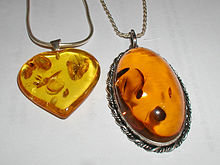



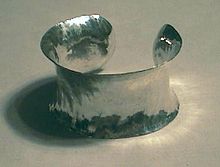

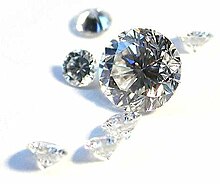

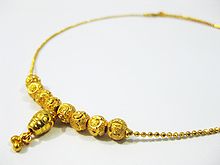




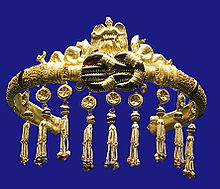



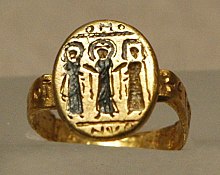
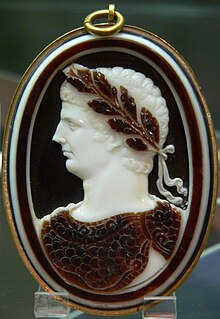
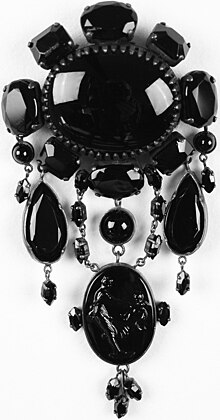































0 comments:
Post a Comment